
What do you call a place which began as a church, got converted into a mosque and serves as a museum today? From the Latin Empire to the Ottoman Empire, the massive structure changed the history of architecture. It is the Mosque at St. Sophia. Originally named as Hagia Sophia during the Catholic era, it was a Greek Orthodox Church. Designed with a very high dome, it has been the largest cathedral in the world for almost 1000 years. Hagia Sophia in Greek means ‘Shrine of the Holy Wisdom of God’. The basilica was dedicated to the Logos on the anniversary of the birth of Christ, that is, on 25th December because Jesus Christ is the second person of the Holy Trinity. It is famous around the world for the mystical light that reflects above the nave because of the forty windows. When it was converted into a mosque, it became an inspiration for other mosques such as the Blue Mosque of Istanbul and Sultan Ahmed Mosque during its times.
The mystical city of Istanbul had faced many civilizations and the mosque is an example of the Byzantine and the Ottoman Empire under one dome. Mosque at St. Sophia is located at Istanbul in Turkey. However, historically it was known as the Constantinople. A focal point of the Eastern Orthodox Church, it lies between the geographic coordinates 41°N latitude and 29°E longitude.
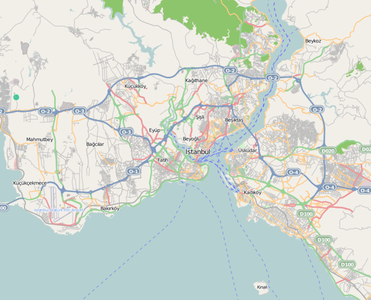
Made out of Ashlar bricks, the dome of the Mosque is about a diametre of 31 metres. The mosque is about 82 metres long and 73 metres wide and 55 metres tall. However, due to various repairs and construction over time, its diametre has reduced to about 30 metres. The height of its dome was 62 metres and the pillars that held the dome were about 100 sq. m.
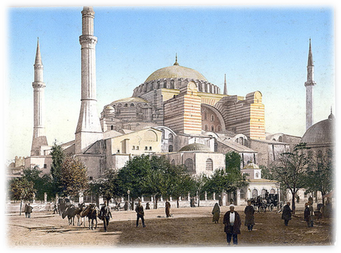
Originally, the Mosque was called Hagia Sophia, which means ‘holy wisdom’. It was built as a cathedral in Constantinople, which is now known as Istanbul. Built in the sixth century, it had a great architecture with two floors at the centre of a giant nave, a great dome ceiling and smaller domes which towered above. Constructed during the Byzantine Empire, Constantinople was the then capital of the State. The construction began in 532 A.D. during the Nika Riots. The riots were against the Emperor Justinian I to besiege him in his palace. However, Justinian I managed to put down the rebellion and decided to build the cathedral. This was a triumph for Justinian and Christianity. With great haste, the two architects, Anthemius and Isidore the Elder constructed the cathedral within a short time of six years. However, this led to certain faults and re-repairs. It was after the fall of the Byzantine Empire in 1453 that the armies of Mehmed II, sultan of the Ottoman Empire established the cathedral. As it was a Christian cathedral, it made a strong impression on the Ottoman rulers and they decided to convert it into a mosque. In order to give it a reflection of the Ottoman architecture, four minarets were eventually added outside the church and were the tallest ever constructed. On the interior, the mosaics were hidden under the yellow paint. Only the Virgin Mary with a child in the apse was an exception to it.
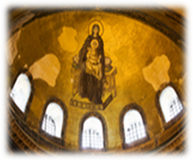
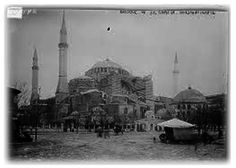
Served as a cathedral for almost thousand years, the Mosque was the first masterpiece of the Byzantine Empire. Its unique features are as follows:
-
The arcade around the dome has about 40 windows that bring the light inside the cathedral.
-
The traditional feature of the Constantinopolitan church planning is reflected in the ramps that provided access to the upper galleries.
-
On the west upper gallery is the Empress’ Lodge from where the empress would watch the rituals and ceremonies performed in the Church.
-
To the north of the apse is the Sultan Lodge. The sultan would silently view the rituals without being known to the public. Also, it could protect him from the assassins. The grills were carved out of the marble in Turkish rococo style.
-
A library was added to the later repairs of the Mosque along with a fountain, an imaret, which is a kitchen to serve the poor and a school for children. The library has about six columns that have bronze grills in the middle, which closes the interior.
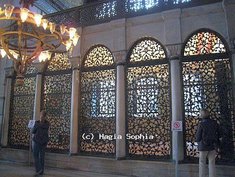 |
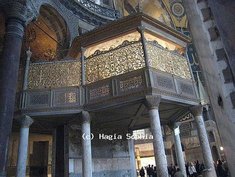 Sultan’s Lodge Sultan’s Lodge |
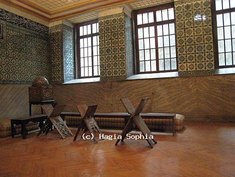 Library Library |
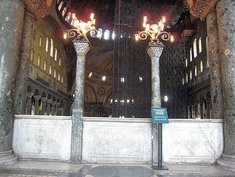 Empress Lodge Empress Lodge |


